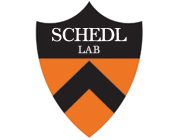Boundaries potentiate polycomb response element-mediated silencing
Publication Year
2021
Type
Journal Article
Abstract
BACKGROUND: Epigenetic memory plays a critical role in the establishment and maintenance of cell identities in multicellular organisms. Polycomb and trithorax group (PcG and TrxG) proteins are responsible for epigenetic memory, and in flies, they are recruited to specialized DNA regulatory elements termed polycomb response elements (PREs). Previous transgene studies have shown that PREs can silence reporter genes outside of their normal context, often by pairing sensitive (PSS) mechanism; however, their silencing activity is non-autonomous and depends upon the surrounding chromatin context. It is not known why PRE activity depends on the local environment or what outside factors can induce silencing.
RESULTS: Using an attP system in Drosophila, we find that the so-called neutral chromatin environments vary substantially in their ability to support the silencing activity of the well-characterized bxdPRE. In refractory chromosomal contexts, factors required for PcG-silencing are unable to gain access to the PRE. Silencing activity can be rescued by linking the bxdPRE to a boundary element (insulator). When placed next to the PRE, the boundaries induce an alteration in chromatin structure enabling factors critical for PcG silencing to gain access to the bxdPRE. When placed at a distance from the bxdPRE, boundaries induce PSS by bringing the bxdPREs on each homolog in close proximity.
CONCLUSION: This proof-of-concept study demonstrates that the repressing activity of PREs can be induced or enhanced by nearby boundary elements.
Keywords
Journal
BMC Biol
Volume
19
Issue
1
Pages
113
Date Published
06/2021
ISSN Number
1741-7007
Alternate Journal
BMC Biol
PMID
34078365

